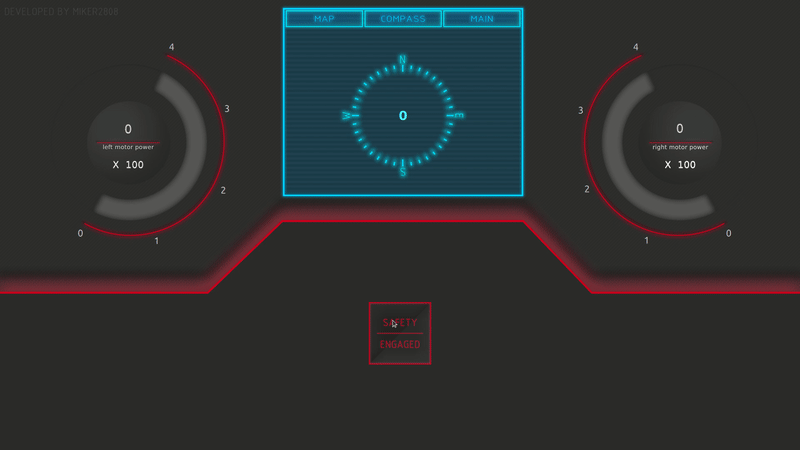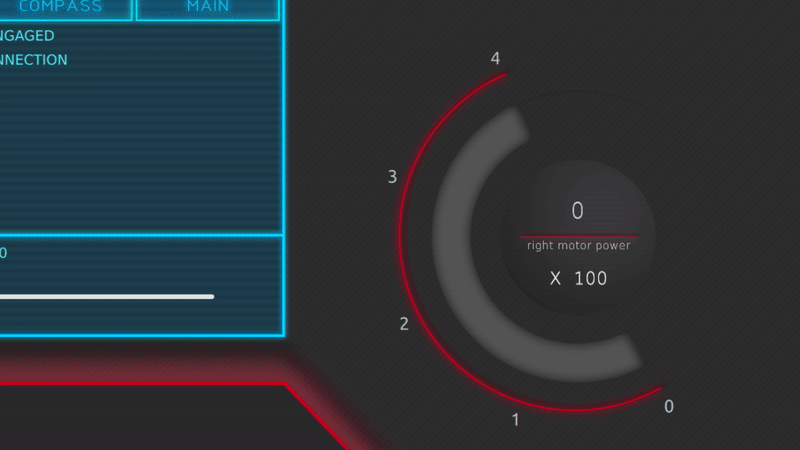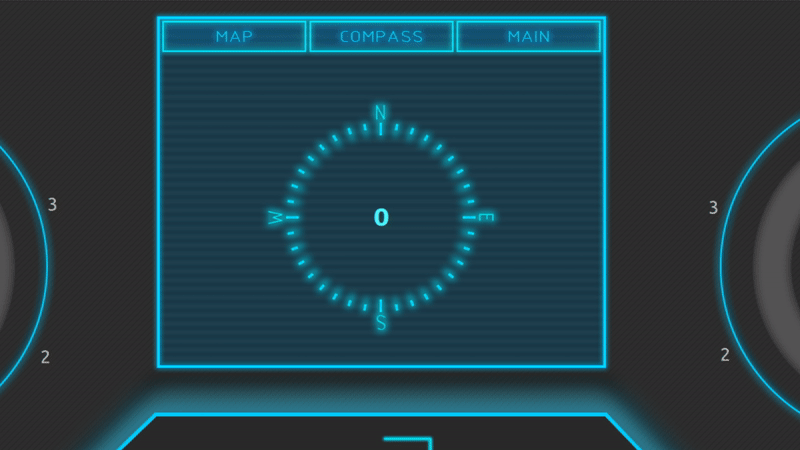This GUI now offers solution both for ROS1 Noetic and for ROS2 Foxy
This is an open source GUI developed for use on a track based robots which use dual mode controllers that can control either left or right side of the wheels/tracks. The GUI is developed using Qt on C++ with QtQuick. The GUI is integrated with ROS and is directly subscribing and publishing to topics.
The GUI allows dynamic animated shifting between safety modes, the GUI subscribes to a safety topic and changes visually depending on the safety mode. When safety is engaged the buttons are disabled and will fade away. Additionally the GUI contains a safety button to manually enable and disable the safety mode
The GUI includes a set of buttons to control the robot using a mouse. The features allows to take the full control of the GUI using only a mouse. The buttons will publishe values accordingly to '/robot/motor_left' and '/robot/motor_right' to actuate the robot using these buttons. The topic names can be changed to your liking in the source code.
The GUI consists of two gauges with value animation and a unique look for reverse driving The gauges subscribe directly to '/robot/motor_left' and '/robot/motor_right' topics so you will be able to monitor the motion with external motor controllers.
The main panel contains all the data necessary to know what is going on with the robot in real time, all the data comes straight from the ROS topics and updates automatically with any new subscribed data, meaning you can change the frequency of updates depending on how you optimize your ROS project. additionally, the panel comes with a slider to change the published speed, from 0 to 400 this project is open source, so you can tweak the gui however you want!
The Compass Panel allows you to see your heading and it comes with a dynamic compass which rotates to your heading, 360 degrees!
The Map Panel allows you to see your robot in real time with satellite imagery depending on the GPS position published to the "/robot/gps" topic. The robot will additionally rotate depending on your heading so you know where your robot is relative to the maps north. Furthermore, the Map Panel allows the user to generate a coordinate array simply by clicking at the desired points on the map, after finishing with your path you simply click on "Start Route" and it will instantly publish a Pythonic list of coordinates as a String! If you are lost, you can always reset the map to your robot using "Reset Pos" button.
To successfuly compile the project you need to set a few things.
- Ubuntu specified in the branch name
- ROS installed in default directory of the version specified in the branch name
- Qt 5.15 (Latest 5.15 is favored)
Qt 6 has not be tested, but due to many updates it may be possible to convert this project to Qt6
For successful compilation, it is recommended to do few actions before building the project. Please Note: ROS1 uses qmake while ROS2 uses cmake
- Open the project using File -> Open Project -> {navigate to the CMakeLists.txt file}
- (Optional) Clean project using Build -> Clean All Projects for All Configurations
- run qmake using Build -> Run cmake
- Finally, build the projects.
Notes:
- The development works well with QtCreator no outside terminal for builds is necessary
- Creating a package.xml and using "colcon build" is NOT necessary, GUI will work with the global bashrc sourced "setup.bash".
- Incase you insist of building with a package, I kept a "package.xml" file ready for use. Do not forget to uncomment the last line of CMakeLists.txt
Side Note: running QtCreator from a ROS sourced terminal will ease with environment variables
If everything is done correctly the project should build right away without errors. Please note that the GUI is using cmake for compilation and it's using the ROS and Qt dynamic libraries for compilation, so you cannot just ship the build file without the libraries. You can ease with the shipment by statically linking the Qt Libraries if you wish to.
- The GUI was developed using the QT open source framework, please follow up their licensing here
- The GUI was developed using the ROS open source framework, please follow up their licensing here
All the images and art were designed and made by me for free, unlimited use





